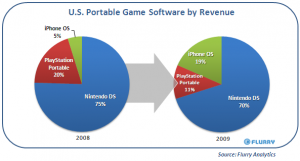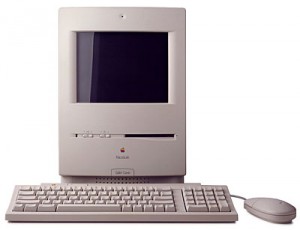Apple released new iLife, new FaceTime Beta for Mac, new MacBook Air models in 13″ and 11.6″ and they gave tantalising glimpses of Mac OS X 10.7 “Lion”. The latter contained a lot of new features regarding app management and should please switchers to the Mac because it makes the ‘green’ pastille work ‘properly’.
But the things I want to talk about most are the FaceTime client and the Mac App Store.
FaceTime Beta for Mac
Simply put, it adds FaceTime to the Mac so you can easily video-conference with iPhone 4 and iPod touch 4 users (and presumably iPad 2 users in 2011). I use iChat AV on Mac a lot more than FaceTime on iPhone 4 but that’s likely because I know a lot more people with iChat. The FaceTime interface on Mac is startlingly minimal and consists of a very simple Mac client and a background daemon (which receives incoming calls so the application itself doesn’t need to be launched). It works. And that’s all there is to it. It means I can videoconference with my wife using FaceTime from my iPhone 4 to her Mac and that suits me very well.

The Mac App Store
The first thing that developers did was scour through the terms and conditions to find everything unacceptable – though Steve said that the App Store would be the best way to find new apps, he added it would not be the only place. Some developers reckon it will only be a matter of time before the Mac App Store became the only place. And I think they’re wrong.
Macs are not iOS devices. The main and most important difference is that Macs are the multifunction, powerful devices used to create apps for iOS devices. As no proper programming languages are permitted on iOS devices, you have to use a Mac to create the apps which power the App Store. Therefore Macs will always be able to do more stuff.
Some developers are dismayed because their apps (which install kexts or input managers) will not be permitted on the Mac App Store. And yes, that’s going to be tough but then your applications are not ‘simple’ apps. But the Mac App Store is about applications. It’s about games, utilities, tools, productivity applications and it wants them to be able to install simply and easily “OTA”. Applications which require kexts and whatnot are not the same class of application at all.
I see this as an advantage. In my experience, Mac users spend more than Windows users on software. But a lot of Mac users never buy any software. Adding the Mac App store will mean there is a net increase in the amount of software purchased. This link will actually become useful.

As Mac users get more comfortable with buying software, they’ll be more interested in buying complex software. We all know that our needs for technology increase as time goes on.












